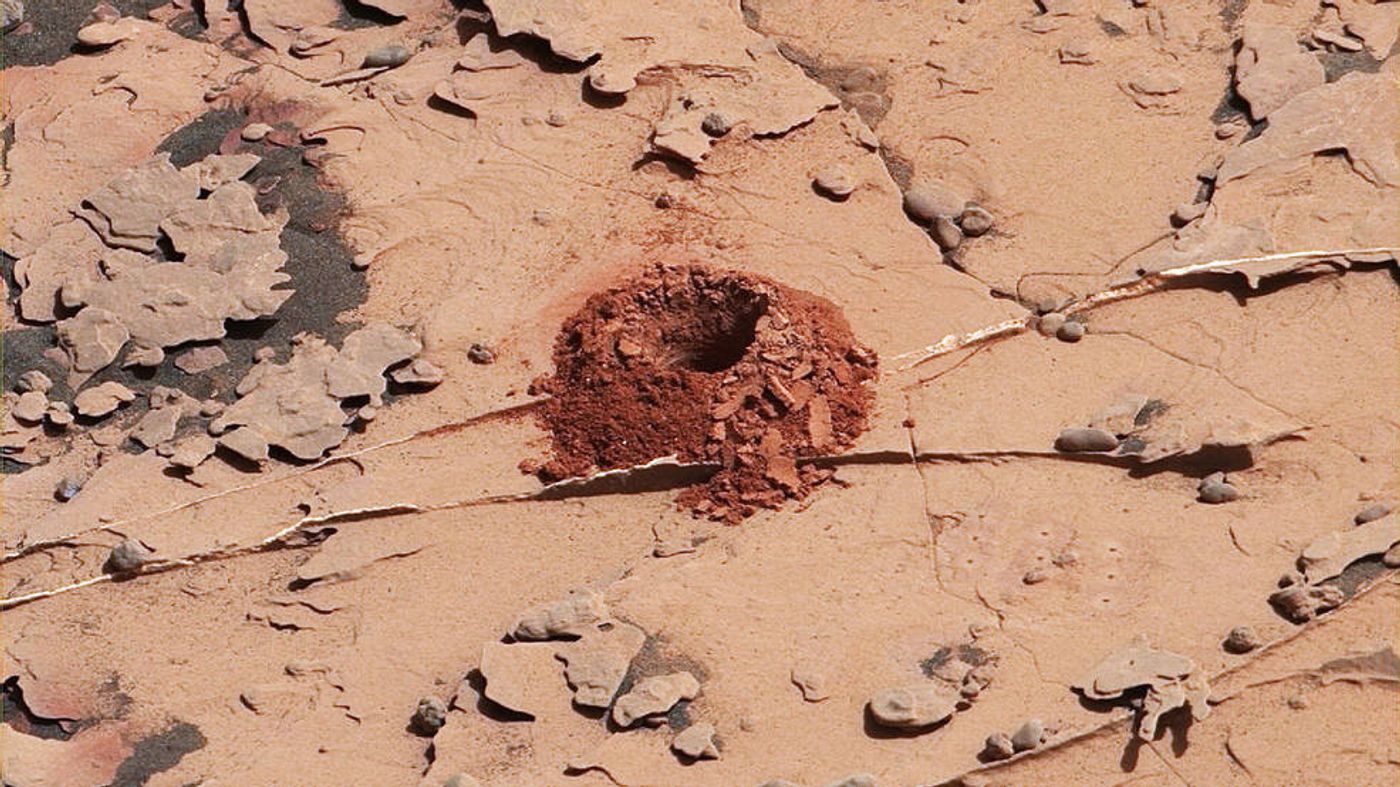NASA Successfully Uses the Curiosity Rover's New Rock-Drilling Technique on Mars
Back in December, a critical component of the Mars-based Curiosity rover’s drill stopped working. In particular, two drilling stabilizers used to keep the mechanism straight during the drilling process wouldn’t deploy correctly, compelling NASA engineers to explore new techniques for drilling into Martian rocks without them.
But while the debacle may have seemed troubling at first glance, it now appears that it was just a minor setback. A statement released by NASA just this week reveals how Curiosity moved forward with a new free-handed drilling process and yielded spectacular results.
Image Credit: NASA/JPL-Caltech/MSSS
The new drilling technique bypasses the inoperable drilling stabilizers entirely by fully-extending the drill bit beyond them and utilizing pressure sensors embedded within the rover’s drilling arm to monitor drilling depth and force.
Citing the statement, this technique enabled Curiosity to penetrate at least two inches into a rock dubbed ‘Duluth’ on the Martian surface.
"The team used tremendous ingenuity to devise a new drilling technique and implement it on another planet," said Curiosity Deputy Project Manager Steve Lee of JPL.
"Those are two vital inches of innovation from 60 million miles away. We’re thrilled that the result was so successful."
Related: The Curiosity rover's wheels are beginning to break down
The result of the drilling attempt is a fine dust that the Curiosity rover can perform chemical and mineralogical analyses on to discern their makeup. The findings could help planetary scientists develop a more robust understanding of Mars’ composition and habitability, among other things.
"We've been developing this new drilling technique for over a year, but our job isn't done once a sample has been collected on Mars," explained Tom Green, a JPL engineer who was closely-affiliated with the development of the new drilling technique.
"With each new test, we closely examine the data to look for improvements we can make and then head back to our testbed to iterate on the process."
Related: Here's what the Curiosity rover looks like from the perspective of a Mars-orbiting satellite
It should be fascinating to see what scientists will find from the analyses and whether the drilling technique will work just as well in other Martian environments. Only time will tell...
Source: NASA









